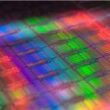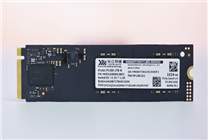Breakthrough in EUV Photoresist Technology: Wuxi Launches China’s First Advanced Manufacturing Platform
Summary:
- Wuxi has unveiled the first domestic platform to master EUV photoresist technology, crucial for sub-5nm semiconductor processes.
- The announcement was made during the 2025 Integrated Circuit Innovation and Development Conference.
- These advancements not only support cutting-edge manufacturing but also prepare the industry for the future of memory technologies.
On September 8, Wuxi, China, announced a significant advancement in semiconductor technology by launching the country’s first platform capable of mastering extreme ultraviolet (EUV) photoresist. This technology is vital for manufacturing processes that operate below the 5nm node, marking a pivotal step in the evolution of the semiconductor industry.
The announcement was made during the 2025 Integrated Circuit Innovation and Development Conference, which began on September 4. The event highlighted several significant projects aimed at propelling China’s semiconductor capabilities forward, including an innovative computing power platform alongside the groundbreaking photoresist developments.
One of the standout projects is the Wuxi Advanced Process Semiconductor Nano-Scale Photoresist Pilot Line. This platform is the first of its kind in China to excel in core raw materials, formulas, and application technologies related to metal oxide (MOR) photoresist. The photoresist produced by this pilot line is set to meet world-class standards, marking a significant leap for the industry domestically.
Additionally, the Jiangsu (Jicui) Photoresist Resin Synthesis Pilot Line represents a groundbreaking research and development platform in the country. Utilizing continuous flow technology, this facility is the only one of its kind in China focused on preparing photoresist resins. It features the pioneering polymerization equipment essential for stable polymer synthesis, bringing further innovation to the sector.
MOR photoresist is a cornerstone of semiconductor manufacturing in the EUV era. This new technology serves as a replacement for the chemically amplified resists used in deep ultraviolet (DUV) processes. Its deployment is critical for enhancing photolithography resolution, reducing gate distances, and minimizing defect rates—essential requirements for next-generation chip production.
The significance of EUV photoresist extends beyond just processes below 5nm. Emerging memory technologies, particularly DRAM, are transitioning to EUV methodologies, necessitating the use of advanced photoresist materials. While NAND flash memory manufacturing does not yet rely on EUV technology, future developments in chip density are likely to make this technology indispensable.
In summary, Wuxi’s advancements in EUV photoresist technology mark a notable shift in the semiconductor landscape for China. By mastering these core materials and processes, China is positioning itself to compete at the highest levels in the global semiconductor sector.
The unveiling of these platforms establishes Wuxi as a leader in advanced semiconductor manufacturing. As global demand for smaller, faster, and more efficient chips rises, these developments will undoubtedly play a crucial role in shaping the future of integrated circuits and memory technologies worldwide.






